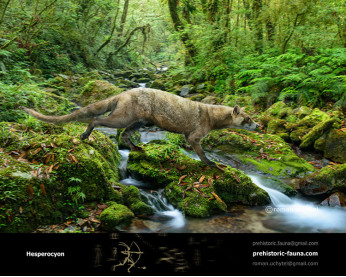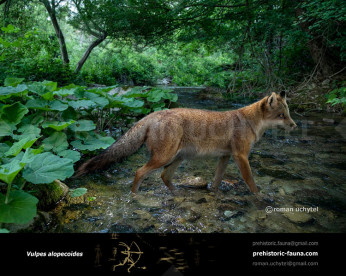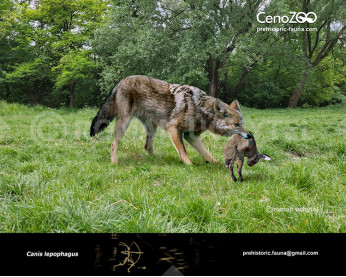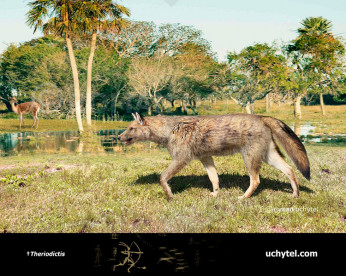Eucyon davisi
444444
Eucyon (†Eucyon Tedford and Qiu (1996)
Order: Carnivora
Family: Canidae
Subfamily: Caninae
Temporal range: Late Miocene- Late Pliocene, 10.3–3.6 Ma (North America and Eurasia)
Dimensions: length- 1,2 m, height - 50 сm, weight - 15 kg
Eucyon is an extinct genus of small omnivorous coyote-like canid that first appeared in North America during the Miocene, living from 10.3—3.6 Ma and existed for approximately 6.7 million years. The genus is notable because it is proposed that its lineage gave rise to the genus Canis.
Eucyon was named by Tedford and Qiu in 1996. Phyletically it stood between Canis and the South American canines that would follow it. In 2009, Tedford revised its diagnosis and described two of its species, E. skinneri and E. davisi, which was originally named Canis davisi by Merriam in 1911.
The jackal-sized Eucyon existed in North America from 10 million YBP until the Early Pliocene. Wang and Tedford proposed that the genus Canis was the descendant of the coyote-like Eucyon davisi, remains of which first appeared in the Miocene (6 million YBP) in the southwestern U.S. and Mexico. By the Pliocene (5 million YBP), the larger Canis lepophagus appeared in the same region and by the Early Pleistocene (1 million YBP) Canis latrans (the coyote) was in existence. They proposed that the progression from Eucyon davisi to C. lepophagus to the coyote was linear evolution.
Оплата
У Вас є кілька зручних способів купівлі зображення: кредитна чи дебетова картка Visa, Mastercard, Maestro; PayPal або банківський переказ
Eucyon (†Eucyon Tedford and Qiu (1996)
Order: Carnivora
Family: Canidae
Subfamily: Caninae
Temporal range: Late Miocene- Late Pliocene, 10.3–3.6 Ma (North America and Eurasia)
Dimensions: length- 1,2 m, height - 50 сm, weight - 15 kg
Eucyon is an extinct genus of small omnivorous coyote-like canid that first appeared in North America during the Miocene, living from 10.3—3.6 Ma and existed for approximately 6.7 million years. The genus is notable because it is proposed that its lineage gave rise to the genus Canis.
Eucyon was named by Tedford and Qiu in 1996. Phyletically it stood between Canis and the South American canines that would follow it. In 2009, Tedford revised its diagnosis and described two of its species, E. skinneri and E. davisi, which was originally named Canis davisi by Merriam in 1911.
The jackal-sized Eucyon existed in North America from 10 million YBP until the Early Pliocene. Wang and Tedford proposed that the genus Canis was the descendant of the coyote-like Eucyon davisi, remains of which first appeared in the Miocene (6 million YBP) in the southwestern U.S. and Mexico. By the Pliocene (5 million YBP), the larger Canis lepophagus appeared in the same region and by the Early Pleistocene (1 million YBP) Canis latrans (the coyote) was in existence. They proposed that the progression from Eucyon davisi to C. lepophagus to the coyote was linear evolution.

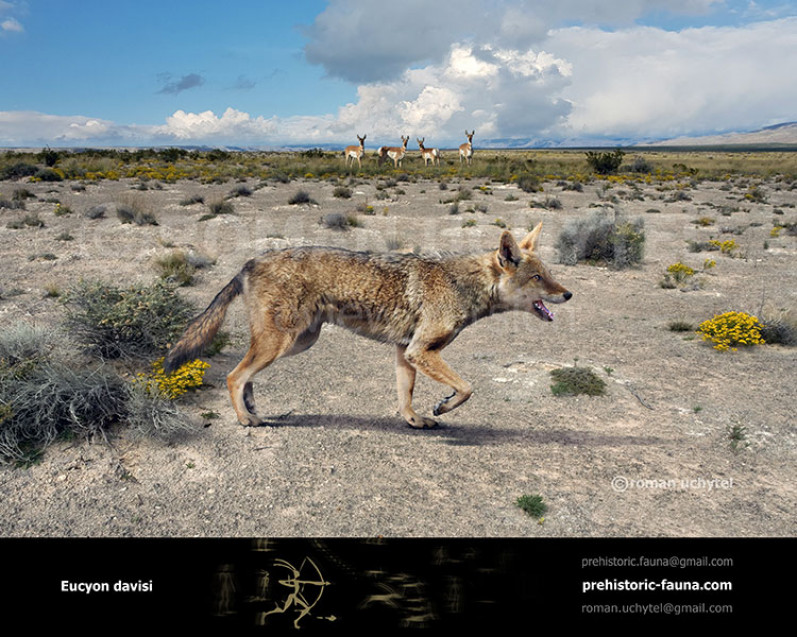
-797x638.jpg)
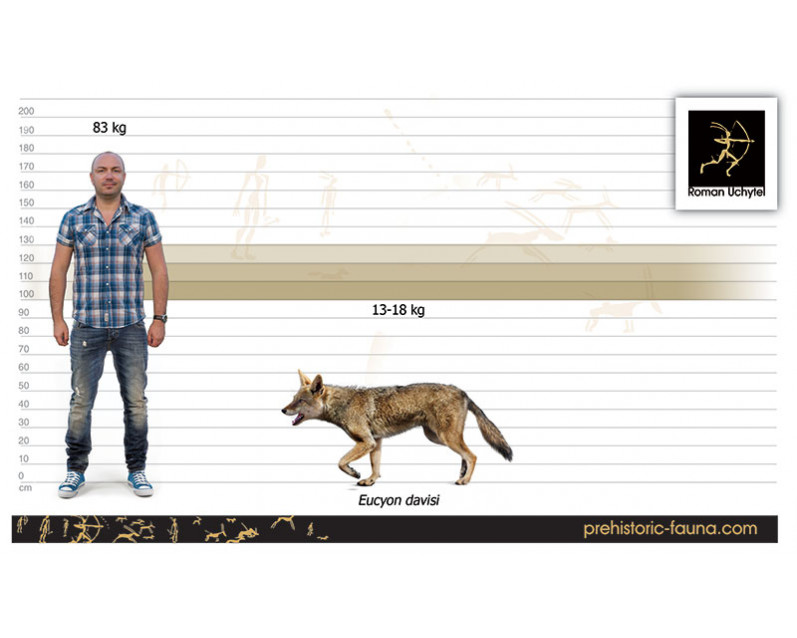

-70x56.jpg)

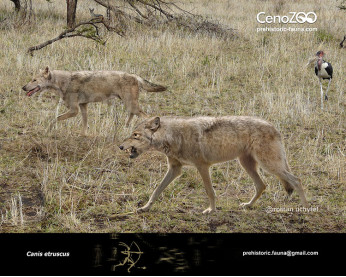
-346x277.jpg)
-lycanoides-346x277.jpg)
